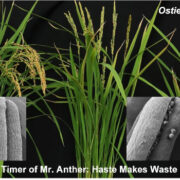
A Timer of Mr. Anther: Haste Makes Waste
The Plant Cell: In a NutshellFang, Guo, Wang, et al. explore the molecular mechanism underlying anther dehiscence in rice.
https://doi.org/10.1093/plcell/koae028
Yuxing Fang, State Key Laboratory of Protein and Plant Gene Research, School of Life Sciences, Peking University.
Yi Wang, State Key Laboratory of Protein and…

SMXL proteins repress moss growth through a conserved ancestral signaling pathway
The Plant Cell: In a NutshellGuillory et al. explore the role of SMXL proteins in Physcomitrium patens growth.
https://doi.org/10.1093/plcell/koae009
By Ambre Guillory, Sandrine Bonhomme and Catherine Rameau
Background: In flowering plants, several proteins of the SUPPRESSOR OF MAX2 1-LIKE (SMXL) family influence the…

Interdisciplinary Plant Sciences: Integrating Plant Science Research in Other Scientific Fields
Blog, CommunityThe concept of 'interdisciplinarity' has emerged as a salient term within the scientific discourse, signifying an escalated interest in both the promotion of interdisciplinary methodologies and the evaluation of their efficacy. The scientific community increasingly recognizes interdisciplinary collaboration…

Review. Revisiting plant electric signaling: Challenging an old phenomenon with new discoveries
Plant Science Research WeeklyIn the electrifying world of plant signaling, a paradigm shift is underway as researchers dig into the intricate mechanisms of action potentials (APs) and slow wave potentials (SWPs). Departing from conventional neurophysiological dogma in the animal kingdom, this review by Barbosa-Caro and Wudick illuminates…
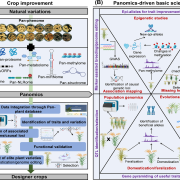
Review: The era of panomics-driven gene discovery in plants
Plant Science Research WeeklyPanomics, an approach integrating multiple ‘omics’ datasets such as genomics, transcriptomics, metabolomics, and phenomics, has seen rapid advancement in recent years due to technological improvements, particularly in genomics. This review focuses on the recent developments in panomics-driven gene…
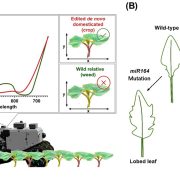
De novo domestication: What about the weedy relatives?
Plant Science Research WeeklyBecause much of the genetic diversity of our crops plants was lost during domestication, many breeding efforts endeavor to cross in resilience genes from wild relatives. An alternative approach is to rapidly domesticate those wild relatives themselves, for example by editing genes that affect flowering…
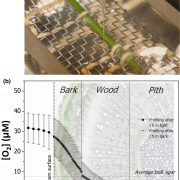
How stems breathe: Oxygen production in woody stems under different light conditions
Plant Science Research WeeklyIn woody plants, we know much less about how photosynthesis functions in stems than in leaves. This study by Natale et al. focused on how chloroplasts in Fraxinus ornus stems of different ages work. The authors looked at oxygen production rates in whole stems, bark, and wood using various methods like…

CAM evolution is associated with gene family expansion in an explosive bromeliad radiation
Plant Science Research WeeklyStudies on Crassulacean Acid Metabolism (CAM) plant genomes are scarse and CAM evolution is known to be an ecological driver of diversification. The subgenus Tillandsia (Bromeliaceae) is one of the fastest diversifying clades in the plant kingdom and is known for its adaptive CAM trait. It has recently…
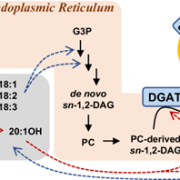
Triacylglycerol remodeling to synthesize unusual fatty acids in plants
Plant Science Research WeeklyPlant oils, composed of fatty acids, provide humans and animals with food, essential nutrients, chemicals, and biofuels. Plants accumulate over 450 “unusual” fatty acids, which could hold significant value if they achieve optimal production. Hydroxylated fatty acids (HFA) are unusual fatty acids…

